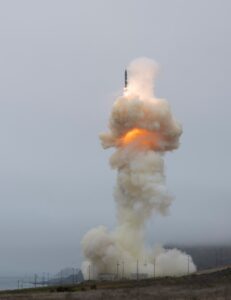
The Senate Armed Services Committee (SASC) fiscal year 2023 defense policy bill includes a provision that would require the Defense Department to plan for acquiring at least 64 Next Generation Interceptors (NGIs), an increase over the 20 missile defense interceptors already planned. The NGI is the Missile Defense Agency’s (MDA) new booster rocket and kill vehicle program for homeland missile defense that replaces the canceled Redesigned Kill Vehicle (RKV). It is slated to start with 20 interceptors placed in silos…

 By
By 











